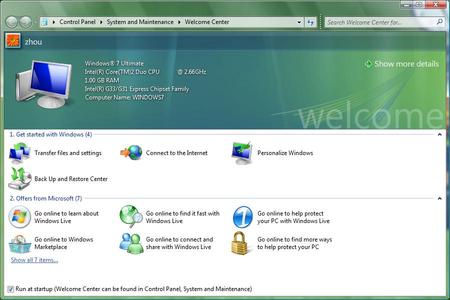 Just like your automobile, appliances, or anything else, computers can become run-down over time. With the lighting quick pace at which new technology becomes yesterday's news, many of us never see the effects of time on our machines before they are relegated to the scrap heap. Unfortunately, this often leads users to neglect the physical needs of their machines, which can lead to hardware failure. With computer owners feeling the squeeze in this economy, it's good to know that there are simple things we all can do to help increase the lifetime of our machines.
Just like your automobile, appliances, or anything else, computers can become run-down over time. With the lighting quick pace at which new technology becomes yesterday's news, many of us never see the effects of time on our machines before they are relegated to the scrap heap. Unfortunately, this often leads users to neglect the physical needs of their machines, which can lead to hardware failure. With computer owners feeling the squeeze in this economy, it's good to know that there are simple things we all can do to help increase the lifetime of our machines.
Overheating is one of the most dangerous converns for hardware, and one of the simpler ones to minimize or prevent entirely. Between the tiny moving parts and electrical currents running through everything, the inside of your computer can become very hot, causing damage to every piece of your system. The first thing to do is to monitor your PC's temperature. If it feels hot to the touch (not just warm) or the temperature goes up significantly over time, you may need to intervene. All computers have small fans to help disperse the heat generated inside the case, in a computer that's overheating, these may be broken or just not powerful enough. You can replace these fans (heat sinks) yourself, or hire a professional to do it for you. You can also reduce overheating problems by not pushing your desktop past its capabilities (overclocking) and ensuring that the vents are clear of obstructions.
Another straightforward issue for users to resolve may surprise you: dust bunnies. Just as dust finds its way into the strangest places in your car, it also winds up inside your computer case where it can build up. While most of the time this is harmless, large piles of dust can damage moving parts or block the vents for the heat sinks. The best solution is to periodically open up the case of your computer and use "canned air" to blow away the dust inside. Remember, make sure that the computer is turned off and unplugged before you start to open it to prevent damage to the hardware and yourself.
While keyboards and mice are pretty inexpensive components, it's still smart not to waste money replacing them when you could just as easily keep them in working order for much longer. Keyboards are often damaged when food and other small items get stuck beneath the keys. To reduce the risk don't eat at the computer, or put your keyboard away if you do. Standard mice, with a ball built into the bottom to track movement, should be used on a clean surface such as a mouse pad. You should clean this off periodically and keep it away from food just as you would a keyboard. In the event that liquid spills on either item, unplug it immediately and allow it to dry all the way before testing if it is still functional (this will reduce the risk of a short).
One great way to protect the components of your computer involves a little bit of an investment, but it literally can mean life or death for your computer. Instead of plugging directly into a wall socket or simple power strip, you can use a surge protector or a universal power supply to protect your computer from outages and spikes. Both of these issues cause a enormous amount of hardware destruction and data loss every year. It's vital to get a universal power supply that has enough voltage to run your entire system in order to get the full benefit, so it may be wise to consult with a professional about your power needs if you choose that product. A surge protector doesn't provide the same protection against data loss in the event of a power outage, but is less expensive and provides needed protection for your hardware from power spikes
Keeping Your Computer Healthy
Saturday, 5 December 2009
Labels: English











